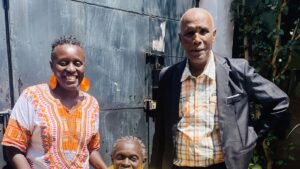Family Sues Bucknell University Over Football Player’s Death Allegedly Linked to Hazing
In a tragic turn of events, the family of a Bucknell University football player who died following his first practice has initiated legal action against the university. The lawsuit accuses the institution and its staff of failing to prevent a hazing ritual that allegedly led to the young athlete’s death.
Calvin “CJ” Dickey Jr., an 18-year-old freshman, collapsed during a practice session on July 10, 2024, at Bucknell University in Lewisburg, Pennsylvania. He was performing “up-downs,” a physically demanding exercise, when he fell ill. The lawsuit, filed in Philadelphia County, claims his collapse was due to a hazing activity for freshmen players.
According to the autopsy report from Montour County, Dickey succumbed to “exercise collapse associated with sickle cell trait,” rhabdomyolysis, and acute renal failure two days after being hospitalized. Rhabdomyolysis, or rhabdo, occurs when muscle tissue breaks down and releases substances into the blood, potentially leading to kidney damage.
The lawsuit, brought by Dickey’s parents, Calvin Sr. and Nicole Dickey, alleges that Bucknell’s athletic trainers and coaches were aware of CJ’s sickle cell trait but failed to implement necessary precautions. The family seeks accountability and a comprehensive explanation of the events that led to their son’s untimely death.
“We have asked repeatedly for not just a high-level overview of what happened that day, but for the details, the specific fully transparent details of what happened to him that day,” Nicole Dickey told NPR. “We’ve reached the point with Bucknell where we do not feel that we’re going to get that. The only path for us to get that truth is to file the civil lawsuit.”
During a press conference, their attorney, Mike Caspino, accused the university of concealing information. He questioned, “I dare to ask, what in the world are they hiding? What is so bad that they can’t tell the parents, the grieving parents of a son who died, what happened and don’t want to share it with the world?”
Allegations of Hazing and Negligence
The lawsuit paints a picture of a harrowing experience for freshmen athletes, asserting that intense training sessions were routine. It claims that during a “light workout with no weights,” Dickey was pushed to continue despite showing signs of distress, without any athletic trainer present, violating NCAA requirements.
The suit also alleges that senior university officials, including Bucknell President John Bravman and other athletic department leaders, were aware of these practices but did nothing to stop them. It highlights a subsequent incident where another freshman player suffered rhabdomyolysis under similar circumstances.
In response, Bucknell University extended condolences to the Dickey family and reiterated its commitment to student health and safety, without commenting on the ongoing litigation.
The Role of Sickle Cell Trait and Rhabdomyolysis
Diagnosed with sickle cell trait through mandatory NCAA testing, Dickey was unaware of the potential risks during excessive physical exertion. The condition, prevalent among Black and Latino Americans, can lead to severe complications like exertional rhabdomyolysis.
Following his collapse, Dickey was diagnosed with rhabdomyolysis at a local hospital before being transferred to a trauma center. His condition deteriorated rapidly, resulting in kidney failure and cardiac arrests during surgery.
Preventive Measures in Athletics
Experts emphasize prevention as the best approach to managing rhabdo in athletes with sickle cell trait. Dr. Crawford Strunk from the Cleveland Clinic advises awareness and tailored workout plans for such athletes to mitigate risks.
The NCAA mandates testing and emergency protocols for athletes with sickle cell trait, discouraging the use of exercise as punishment. Despite these measures, the Dickeys claim Bucknell did not provide a specific protocol for their son.
The family hopes that sharing their story will lead to changes in sports conditioning and raise awareness of sickle cell trait’s dangers in athletics. “This should never have happened. It was 100% preventable,” Nicole Dickey asserts.






